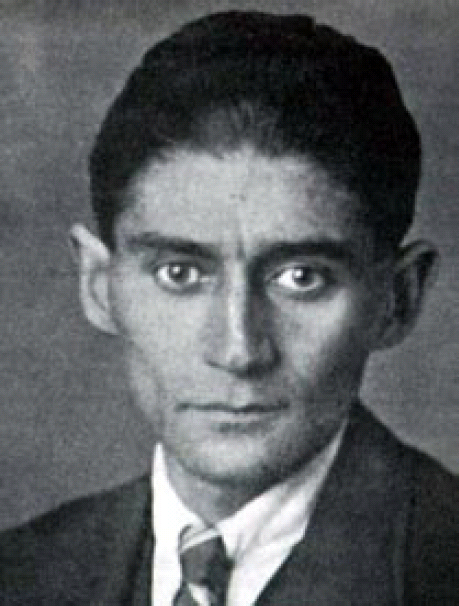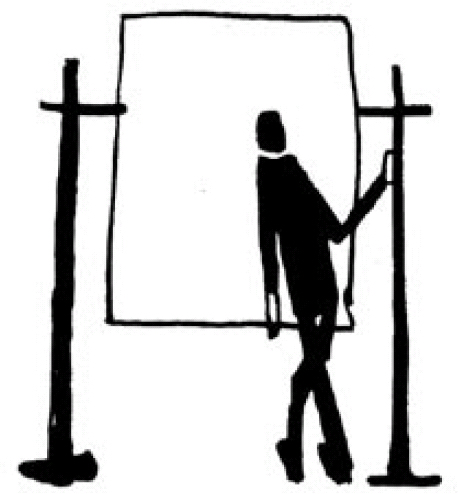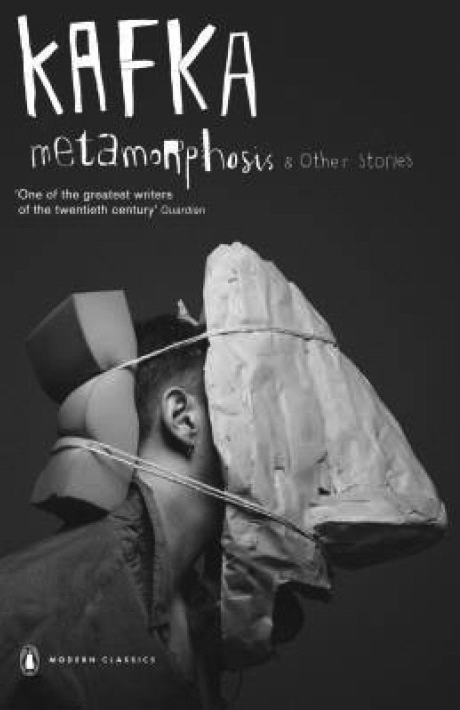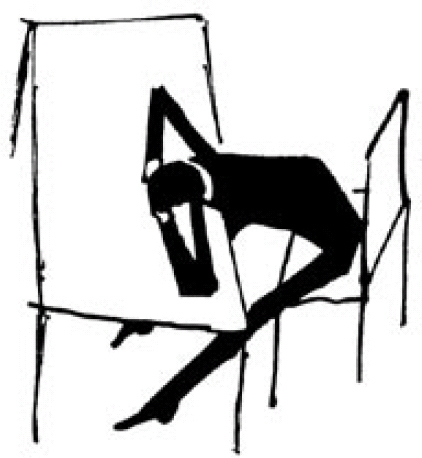‘When Gregor Samsa awoke one morning from troubled dreams, he found himself changed into a monstrous cockroach in his bed’. Thus begins one of the most famous stories in modern literature: Die Verwandlung, or Metamorphosis, first published in 1915 (all quotations here are taken from Reference Kafka and HofmanKafka/Hofman 2007). The author was the enigmatic Franz Kafka, whose work has been the subject of an extraordinary degree of critical attention (Reference GrayGray 1962; Reference HellerHeller 1974; Reference PreecePreece 2002).
The alienated author
Born in Prague in 1883, Kafka lived through the declining days of the Habsburg Empire and the creation of the Czechoslovak Republic in 1918 (Reference HaymanHayman 1981; Reference SalfellnerSalfellner 2005). He was in many ways the archetypal outsider. His family belonged to the German-speaking minority of a city where the majority spoke Czech, and he was also a Jew. Anti-Semitism was rife and Jews lived in a circumscribed quarter of the city. The last years of Kafka's life witnessed the emergence of the Nazis; three of his sisters were to perish in the concentration camps, and Kafka himself would most probably have died there too, had he not succumbed to tuberculosis in 1924. Estranged from Prague society, Kafka was also estranged from his own family. He felt particularly uneasy in his relationship with his father, about whom he wrote his famous ‘Letter’ (Brief an den Vater, 1919). Kafka perceived his father as brash, bombastic and relentlessly critical of a son he did not understand. In contrast, Kafka himself was a retiring, introspective individual who recoiled at his father's brazen self-confidence. Kafka also felt uneasy in his own body and until late in life appears to have found physical intimacy repellent.

Cover of original German edition of Metamorphosis.
During his short life Kafka produced three novels, The Trial (Der Prozeß, 1925), The Castle (Das Schloß, 1926) and Amerika (1927), as well as many short stories, diaries and letters. Since his death the adjective Kafkaesque has entered the language to describe the struggle of the individual against a faceless, uncaring and Byzantine bureaucracy.

Franz Kafka aged 40, in the final year of his life.
Writer or visionary?
Critics have attempted to explain Kafka's work in a variety of ways. He has been seen as a latter-day Kierkegaard, providing an existential account of the predicament of modern man. He has been seen as a Jewish mystic drawing on the traditions of the Kabbalah to create texts whose meaning is revealed only to the initiated. His work has been considered as a modern reworking of Bunyan's Pilgrim's Progress, with his characters embarking on a spiritual journey through a secular world. His work has also been credited with anticipating the horrors of both Fascism and Stalinism. However, a recent book by Reference HawesHawes (2008) has sought to debunk what it sees as the excessive mythologising of Kafka and to present him primarily as a writer rather than as an other-wordly guru.

Drawing by Kafka.
Kafka and the psychiatric tradition
Kafka's life and writings have attracted the attention of psychoanalysts and psychiatrists. He was writing around the same time as Freud was developing his ideas about the Oedipus complex. Freud first announced this concept to the world in The Interpretation of Dreams in 1900. Commentators have interpreted Kafka's work, particularly his Letter to His Father, as evidence of unresolved Oedipal problems. His fictional work, which often involves a character in conflict with authority, is viewed as ‘really’ being about Kafka's relationship with his father. The self-abasement of Kafka's characters in the face of authority and their desire to please their tormentors is taken as a reflection of the author's experience of being a Jew in a hostile world. The victims, internalising their persecutor's malign criticism, see themselves as inferior or, like Gregor Samsa, as vermin. Some have even seen this aspect of Kafka's work as evidence of a distinctly Jewish sense of humour, albeit of a very dark nature. And lastly, Kafka's unease with others and with his own body has been drawn on by R. D. Reference LaingLaing (1960) in his account of the schizoid personality.
All these interpretations of Kafka's work should make us wary of considering that there is a final and definitive account of his extraordinary stories. Indeed, it is a tribute to his art that it defies easy explanation. With this in mind, there are of course multiple ways of interpreting Metamorphosis and the interpretation given here is only one of many. A potentially fruitful way to look at the story is to see it as one of alienation. We can see parallels between the experiences of Gregor Samsa and those of people with severe mental illness.

Cover of Michael Hofmann's translation of Metamorphosis (2007, Penguin Books. Cover photograph: © Jacob Sutton; stylist: Gary Card).
Metamorphosis
Gregor Samsa is a travelling salesman who lives with his parents and sister in a city flat. The story begins with Gregor waking up one morning to discover that he has turned into a cockroach. This immediately sets him apart from his family and we see how they respond to the change in him. One of the first casualties is communication. From behind the door of his room Gregor tries to explain his predicament. On the other side of the door are his family and the chief clerk of his firm, who has arrived at the house to ask why he is not at work. Unfortunately, what comes out of Gregor's mouth does not sound human to his audience. ‘Did you understand a single word of that?’ asks the chief clerk of Gregor's family. Mental illness often results in a breakdown in communication. The sufferer finds it difficult to describe what is happening to them, while their relatives feel mystified. It is as if the mentally disturbed person is stranded in another world, whose language is not comprehensible to others. Kafka's story captures this experience very well.
The theme of communication breakdown recurs throughout the story. When Gregor tries to talk to the chief clerk, the latter turns his back on him. Later, Gregor observes that it did not occur to his family that although they could not understand him, he could understand them. This is an experience that is familiar to many patients who feel that they are talked about or over by staff and relatives. Ironically, his father exclaims, ‘If only he understood us’. This is rebuffed by Gregor's sister, who indicates that such a thing is impossible. Gregor is thus trapped in his own alien world. A poignant illustration of his isolation occurs when Gregor glimpses an old photograph of himself. In the photograph he is in military dress and ‘smiling confidently’. Kafka need say no more: the contrast between Gregor's old persona and his new one is telling.
Metamorphosis of the family
In the story we see how the family's attitude to Gregor evolves over time. When they first catch sight of Gregor they are shocked. The mother faints. The father is torn between anger and consternation; his main impulse is to get Gregor back into his room. Eventually his father succeeds in giving his son a ‘truly liberating kick’, which sends Gregor reeling and bleeding back into his room, which is promptly ‘battered shut’ with a cane. The family are at pains to keep him hidden.
Gregor's sister Grete tries to be supportive by leaving food for him and cleaning his room. Initially, she is the only member of the family to venture into his room and this grants her a privileged position: she is the one with first-hand news of how Gregor is progressing. Her parents, who had hitherto thought her a ‘somewhat useless girl’, develop a new-found respect for her. She appoints herself the family ‘expert’ in the management of Gregor and tussles with her mother as how best to deal with him. The change in Gregor has brought about a shift in the dynamics of the family. Again the parallels with the impact of mental illness on families are obvious.
Despite her supposedly good intentions, there are occasions when Grete is insensitive to Gregor. When she comes into his room she rushes to the window and flings it open ‘with febrile hands, almost as if she were suffocating, and then, quite regardless of how cold it might be outside,’ she stands ‘by the window for a while, taking deep breaths’. Eventually his sister loses interest in helping him. She cleans the room only cursorily and is indifferent to whether he eats his food. Gregor, who eavesdrops on the family conversations, notices that they talk less and less about him. His room begins to be used to store unwanted items. Alan Reference BennettBennett (2005) in his account of his mother's depressive illness admits that he became less tolerant and caring with each relapse.
Resolution
Gregor's world becomes more constricted. At the beginning of his ordeal he is able to see out into the street; but now his view of ‘distant things’ grows ‘fuzzier’. If he did not know otherwise, he might think that his window ‘gave on to a wasteland where grey sky merged indistinguishably with grey earth’. Many people who become mentally ill report that the range of their concerns and interests becomes narrower. Gregor's attempt to enlarge his horizons ends in disaster. He hears his sister playing her violin and is captivated by the music. He asks himself: can he really be ‘an animal’ if he is moved by music. It is as though ‘he sensed a way to the unknown sustenance that he longed for’. Drawn to the music, he enters the room where his family and three lodgers are gathered. Predictably there is pandemonium and the terrible family secret is now out in the open. By this stage his sister is exclaiming ‘We have to get rid of it ’ (emphasis added). Gregor saves them the trouble by retreating to his room and expiring a few hours later.

Drawing by Kafka.
The story ends with the family, relieved and happy, taking a tram to the park in the warm sunshine. They now have hope and Grete has blossomed into an attractive young woman. If we do see analogies with mental illness in the story, then we are left with a rather bleak picture. The family respond to Gregor's plight with horror, aggression and indifference. Even the sister's attempts to be caring reveal insensitivity and revulsion. What the story does convey is the alienating effect of being different from others. It also shows how easy it is for carers and psychiatric staff to be unintentionally cruel to sufferers from mental illness. Of course many other psychiatric perspectives could be brought to bear on Metamorphosis and each reader will respond differently to the tale.



eLetters
No eLetters have been published for this article.